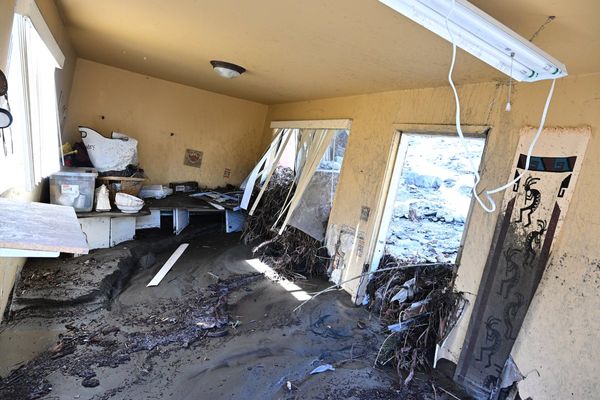
There's good news and bad news on the U.S. bankruptcy front.
According to U.S. federal government figures, bankruptcies continue to fall, from 1.6 million bankruptcies in 2010 to about 414,000 cases in 2021, with 97% of those cases being consumer bankruptcy cases.
The idea behind bankruptcies—especially Chapter 7 bankruptcies, which are the most common form of consumer bankruptcies—hasn't changed a bit. It's a way for Americans down on their financial luck to sell off assets and have specific debts discharged by a bankruptcy court.
Even as bankruptcies decline, it's useful to know what happens when one undergoes Chapter 7 bankruptcy. It's not a warm and fuzzy subject, but it's worth understanding if financial peril ever comes into play.
What Is Chapter 7 Bankruptcy?
Chapter 7 bankruptcy is the fastest and most efficient form of individual consumer bankruptcy.
The upside for those who go into Chapter 7 bankruptcy is that a host of serious debts, including credit card, medical, and personal loan bills can be discharged. By and large, that's what Chapter 7 bankruptcy does—it gets rid of a big chunk of an individual's unsecured debt and gives them a chance to get back on their feet financially.
According to Debt.org, Chapter 7 bankruptcy is highly effective in discharging large, unsecured debts. In 2016, for example, over 95% of all Chapter 7 bankruptcy cases saw most or all unsecured debts discharged.
Also, in virtually all Chapter 7 cases, the bankrupt individual is allowed to keep their primary residence.
How to Qualify for Chapter 7 Bankruptcy
Qualifying for Chapter 7 bankruptcy isn't all that easy, as there is a fairly stringent means test involved in getting the green light to go ahead with bankruptcy proceedings. Knowing what the means test is looking for is the first item on a consumer's Chapter 7 checklist.
The goal of the Chapter 7 bankruptcy means test is to determine whether the filer cannot pay his or her debts. The calculation to determine that status is simple—the Chapter 7 filer's primary monthly consumer (but not business) expenses are deducted from their average 6-month income (estimated over the past six month's worth of income). The amount remaining is the bankruptcy candidate's disposable income.
If that disposable income figure is deemed too high, the bankruptcy candidate's chances of being approved for Chapter 7 bankruptcy are remote. In that scenario, the consumer is expected to use their disposable income to pay off any household debts.
The federal government has established a "median" monthly income as the benchmark for qualifying for—or being rejected for—Chapter 7 bankruptcy. That figure is based on state-by-state criteria, with a bankruptcy filer in a high-income state such as Massachusetts likely to have a higher median income standard to clear than a filer from a lower-income state like Mississippi.
If a debtor passes that means test, they will likely be approved for Chapter 7 bankruptcy.
Shortlist Criteria for Qualifying for Bankruptcy
By and large, if a debtor's financial situation falls into the following categories, they will pass the test:
- Household debts account for more than 50% of annual income.
- The filer would need five years or more to pay off all unsecured debts.
- Household debt is taking a huge emotional toll on a debtor's life, with sleepless nights and ruined marriages being common examples of stress-related events that lead to bankruptcy court approvals.
- The filer has no disposable income, or their disposable income is low.
- Monthly income falls under the median income criteria in a debtor's home state.
Once a debtor is approved for a Chapter 7 bankruptcy, the entire process typically expected to take between 90 and 120 days.
What's the Difference Between Chapter 7 and Chapter 11 Bankruptcy?
Chapter 7 bankruptcies differ from Chapter 11 bankruptcies in multiple ways. First, Chapter 7 bankruptcies primarily involve individual filers, while Chapter 11 bankruptcies mostly involve businesses and corporations.
That difference impacts how each bankruptcy is structured.
In Chapter 7, the filer's financial assets are sold off to pay affected lenders and creditors.
In Chapter 11, on the other hand, the filer reaches an agreement with lenders and creditors to renegotiate the terms of the loans so the bankrupt entity can more easily pay its debts without having to sell any assets. In virtually all cases, businesses that enter into Chapter 11 get to keep their businesses operating and have a chance to climb out of debt, thus making Chapter 11 a business-reorganization opportunity.
Legal structure isn't the only difference between Chapter 7 and Chapter 11—money factors in, too.
For example, most filing fees for Chapter 7 are fairly low—usually around $338. That's not the case with Chapter 11 bankruptcy filings, which can run at $1,738, according to the legal website Nolo.com.
The timeframe for both forms of bankruptcy differs, as well.
Chapter 7 bankruptcies can be disposed of within four months (unless it's a business bankruptcy, which can last a year or so). In most cases, Chapter 11 bankruptcies can take several years to wind down.
Essentially, the decision to file for Chapter 7 or Chapter 11 bankruptcy depends on a debtor's personal situation.
If a debtor is an individual under severe financial stress, Chapter 7 has more to offer, as it allows the debtor to keep their home and significantly curb their unsecured debt burden. If a debtor is a business owner looking to buy some time, hang on to their company, and negotiate their outstanding loans and debts, a Chapter 11 bankruptcy fits the bill.
Pros and Cons of Chapter 7 Bankruptcies
Considering it actually is a bankruptcy deal, Chapter 7 filings offer a fair share of pros against some significant cons.
Advantages of Chapter 7 Bankruptcies
Chapter 7 bankruptcy comes with several major advantages.
Filers Keep Many of Their Assets
The first big pro is that, for the most part, filers don't give up personal assets. That means big-ticket possessions like a the family home, computers, phones, and the family vehicle are considered hands-off to creditors in a Chapter 7 case.
Unsecured Debt Can Be Eliminated
While it's usually best to pay off unsecured debts, to protect your credit rating and keep interest on loans and credit cards low, Chapter 7 does make sense if a filer's debt is higher than 50% of their yearly income. In that case, Chapter 7 bankruptcy can get a filer on the path to a debt-free life and significantly reduce the filer's financial stress.
Filing Stops Collections Agency Requests
Anyone who has ever dealt with a persistent collections agency can tell you how nerve-racking it can be to be targeted for debt repayment. Regular phone calls, threats to financial standing, nasty letters, texts, and emails are par for the course for collections agencies.
With Chapter 7, those aggressive collection agencies largely go away, giving a debtor a measure of peace as they rebuild their financial life.
Disadvantages of Chapter 7 Bankruptcies
Chapter 7 bankruptcy does also have some serious downsides.
It Doesn't Discharge Personal Debts
Under Chapter 7, bankruptcy filers still have to make good on personal debts like alimony and child support, college loans, and taxes owed to the government.
Filers Can Lose Their Homes
There is the possibility that a debtor could lose their home if there is enough home equity to repay creditors. Also, if a debtor cannot pay their mortgage under Chapter 7, they could lose their home.
There Are Serious Financial Ramifications
Filing for Chapter 7 bankruptcy means, among other negatives, that the bankruptcy will remain on a debtor's credit report for 10 years, identifying the debtor, fairly or unfairly, as a deadbeat on their loans and credit. Any attempt to get new credit (like for a new mortgage) will be an uphill climb, and even if a debtor qualifies, sky-high interest rates on loans and credit are likely.
Filers May Have to Forfeit Their Credit Cards
When a debtor goes through the Chapter 7 bankruptcy process, they shouldn't expect to keep their credit cards—those will be canceled by the card provider.
Maybe that's a plus, though. After all, a debtor can't go into heavy card debt if they are not abusing their plastic privileges.
The Bottom Line
History is chock full of bankruptcies that have taken the financial starch out of famous U.S. citizens.
Take Abraham Lincoln, the nation's 16th president. In 1833, a young Lincoln declared bankruptcy after a business he owned went under. His penalty for doing so was severe—Lincoln spent 17 long years repaying his creditors before he regained his financial footing and embarked on his journey to the U.S. presidency and the history books.
Lincoln was hardly alone. Celebrated figures like Walt Disney, Henry Ford, Milton Hershey, and Donald Trump also declared bankruptcy before they rebounded.
That doesn't mean you will, too, however. In fact, the best bankruptcy strategy is to avoid one at all costs. Unless, that is, you have no choice and have to file for one of the most severe but under-appreciated financial tools under U.S. law.
In that case, you got to do what you got to do.







